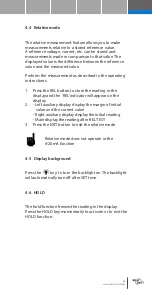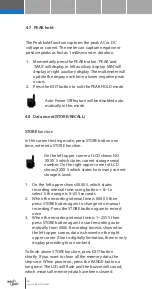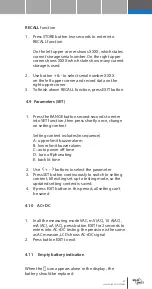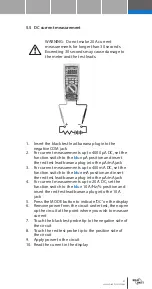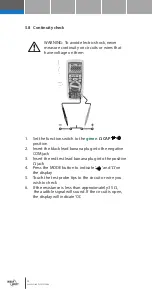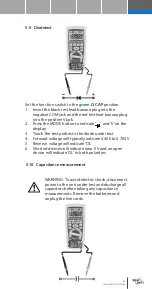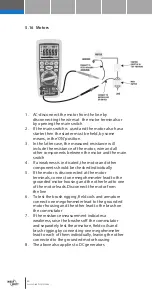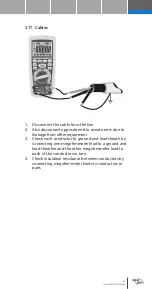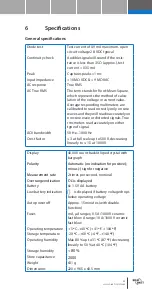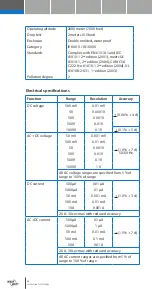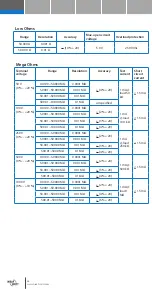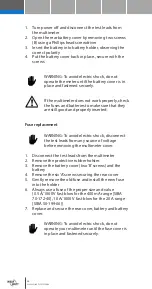
59
www.nieaf-smitt.com
5.15 Insulation resistance measurement
1. Set the rotary function switch to the INSULATION
position and press the RANGE button to select the
voltage which displays on the top left corner
2. Connect two testing lines to the tested
3. Hold the TEST button or press the LOCK keystoke
first and then the TEST button
- If the tested is electriferous and its voltage (AC/DC)
is over 30 V, it will refuse work and no high-voltage
testing occurs, it shows ‘>30 V’ on the LCD, the
symbol flashes, and the buzzer warns frequently
- If the tested is diselectriferous or its voltage is lower
than 30 V, it will enter into the formal testing
process and bring the high-voltage on the primary
display
The insulation resistance in MΩ is indicated in-phase
with analog bar; on the top right corner display,
the tested insulation voltage in V (DC) is indicated,
the symbol flashes and the buzzer warns
frequently
4. Being free from the TEST button or pushing the
TEST button in the LOCK status can exit from the
LOCK status and shutoff the highvoltage
synchronously, the resistance values is indicated in
the primary display will be held, and the top right
corner display still be in the status of monitoring the
insulation voltage for the tested
5. Subsequently, discharge the balance insulation
voltage of the tested through the inner switch of the
meter
6. Turning the function switch or press the EXIT button
can exit automatically from testing status during the
process

